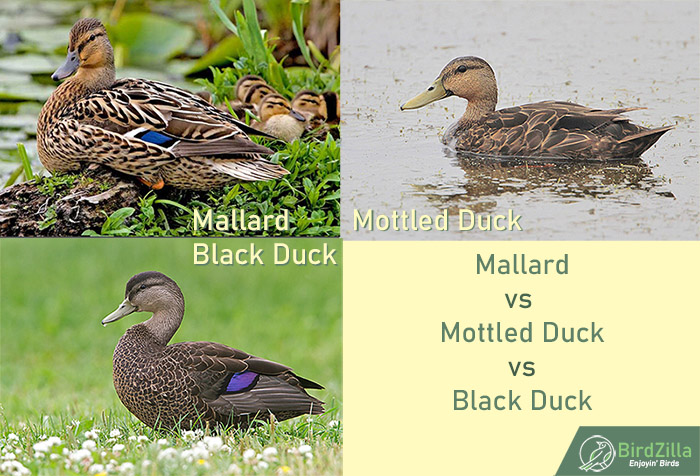
In this article, we will be discussing the similarities and differences between three duck species: Mallard, Black Duck, and Mottled ducks.
While these birds may seem easy to distinguish from each other at first glance, there are actually several identification challenges that birdwatchers and nature enthusiasts may encounter.
For example, male and female Mallard ducks have different plumage, and immature birds may not have fully developed their distinctive coloration yet. Black ducks can easily be mistaken for female Mallards, and Mottled ducks are often confused with female Mallards or hybrid ducks.
But don’t worry, we will guide you through these challenges and help you become an expert in identifying these beautiful waterfowl.
So grab your binoculars and let’s get started!
In short
Female Mallards, Mottled and American Black Ducks are similar in appearance. Mottled Duck tends to be darker than the Mallard and lighter than the Black Duck. The ranges of the Mottled Duck (southern U.S.) and the American Black Duck do not overlap. Both species will cross with Mallards.
Bill color is a useful field mark. Female Mallard has an orangish bill with variable dark markings. Bills of the other two species range from yellow (male Mottled) to olive green on the American Black Duck and the female Mottled Duck.
Related: Do you know the key differences between geese and ducks?
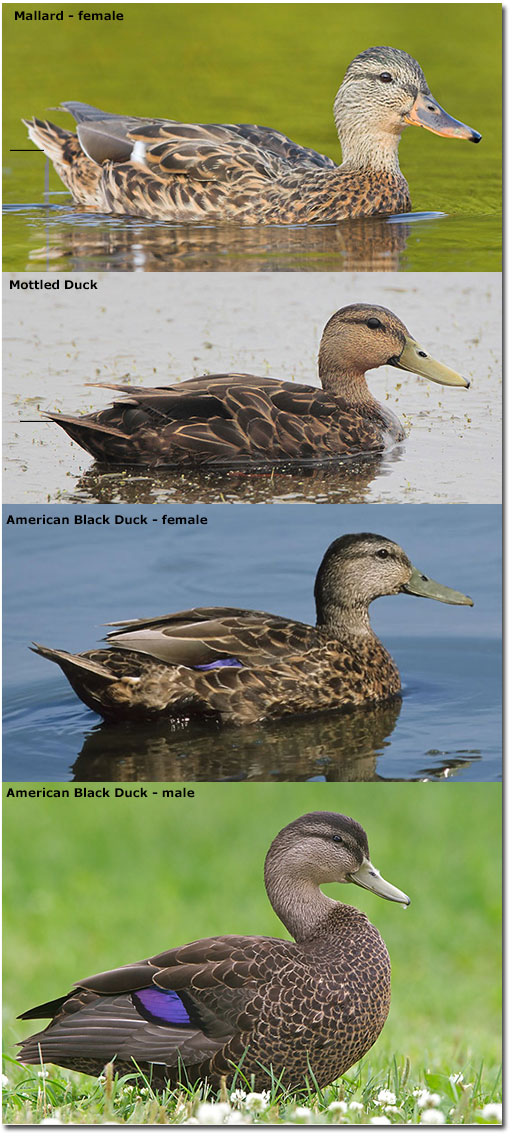
Female Mallard shows more white on the leading and trailing edge of the speculum than on the other two species.
Note the pair of Mottled Ducks in the second image. The male has the typical yellow bill, while the female (rear bird) has an orangish bill, not an olive colored bill. Some major field guides indicate the female Mottled Duck has an olive bill, and one makes a point that it is always unmarked.
However, this bird clearly has an orange bill in sharp contrast with the yellow bill of the male. I have seen what appear to be pure female Mottled Ducks along the Texas coast that have an orange bill with dark markings, although they could be hybrids.
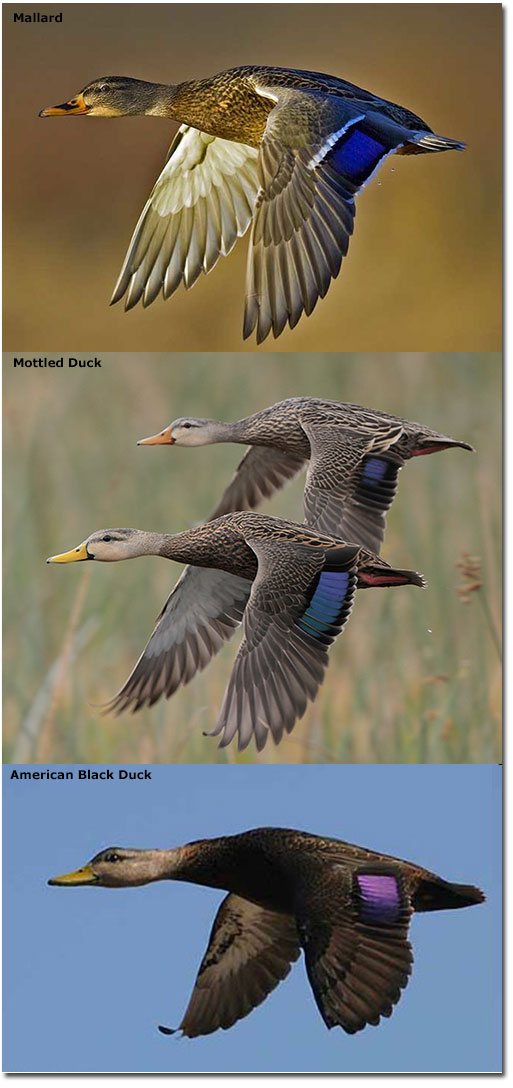
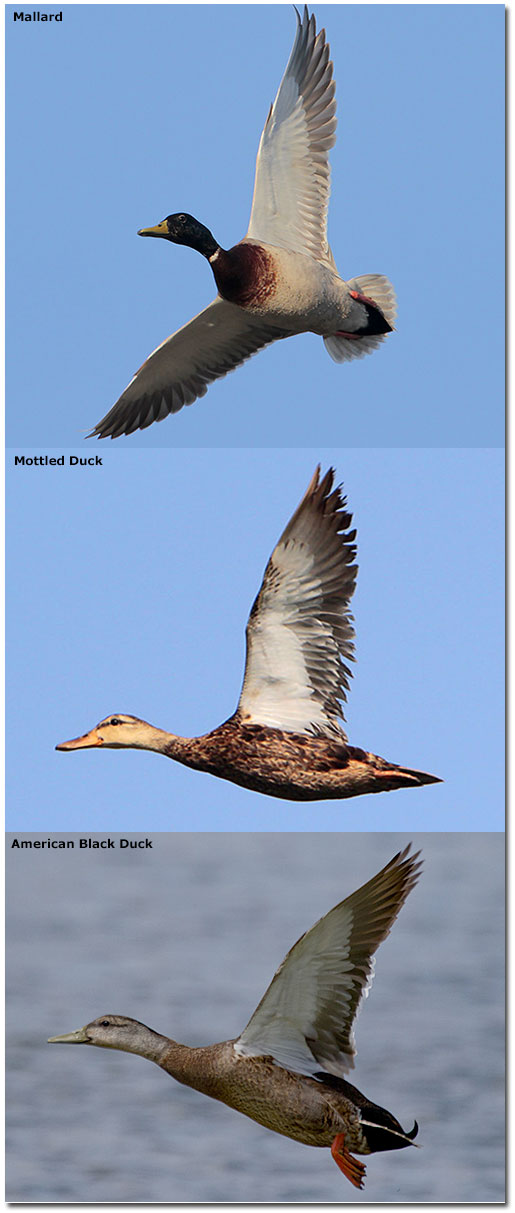
Mallards
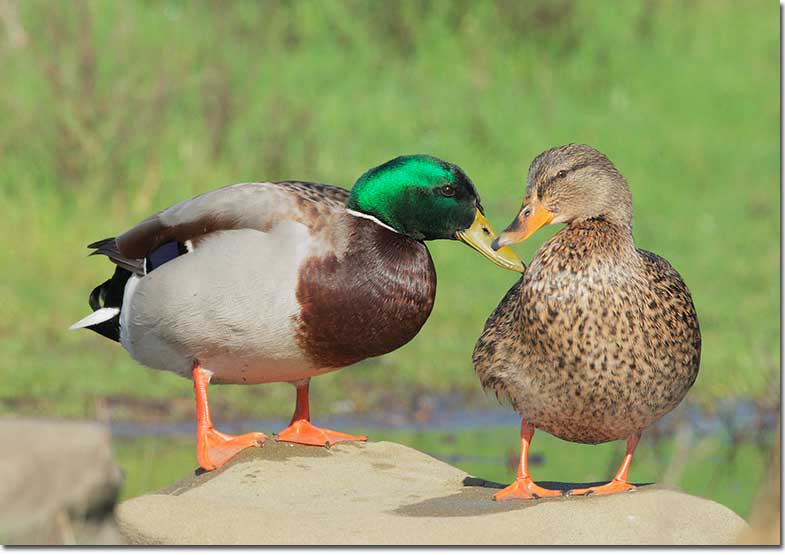
Mallard pair
- Range: Year-round residents across most of the US, with breeding range extending into Canada and Alaska and wintering range into the southern US and northern Mexico.
- Size: 20-26 inches
Breeding male Mallards are easily distinguishable from others due to their distinct appearance. They have a gray body, brown breasts, and a black rear with curled black tail feathers. Their heads are dark iridescent green and their bills yellow.
On the other hand, nonbreeding males and immature Mallards bear a striking resemblance to females, although they might have some green on their heads. Female Mallards are mottled brown and have a scaly look to their feathers. They have a dark cap and a dark stripe through their eyes. Their bills are a patchwork of orange and brown.
Both sexes have a black tip on their bill, orange legs, and a blue speculum on their wings that are bordered with white.
Distinguishing Mallards from other duck species can be done by considering several key characteristics. Firstly, among the three species mentioned, only Mallards can be observed in western North America. When it comes to breeding males, their appearance is quite distinctive, sporting a gray body, an iridescent-green head, curled black tail feathers, brown breasts, and yellow bills.
However, differentiating female Mallards from Mottled Ducks and American Black Ducks can be a bit trickier. While they share similarities, Mallard females have lighter and richer-colored bodies compared to American Black Ducks, and their heads exhibit less contrast with their bodies compared to Mottled Ducks.
If you want to be sure, look for the speculum – Mallards have a blue speculum bordered with white.
Mottled Ducks
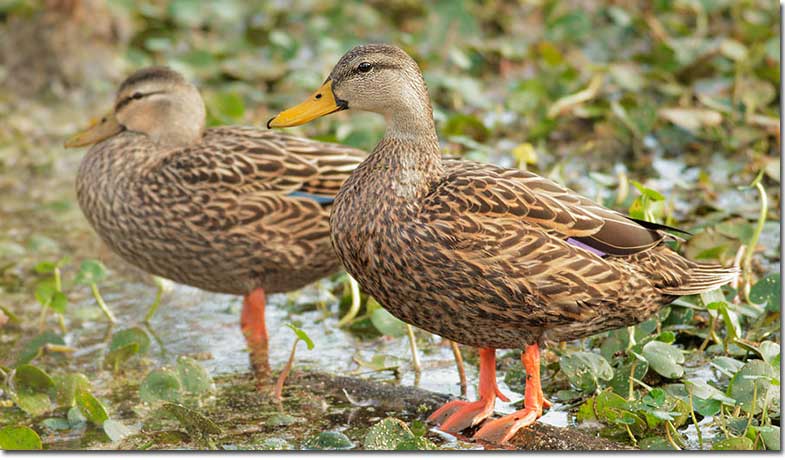
- Range: Very limited range. Found in Florida, occasionally Georgia, and on the Gulf of Mexico coast between Alabama and Tamaulipas.
- Size: 18-23 inches
Male and female Mottled Ducks look nearly identical. They have a mottled brown body with scaly-looking feathers, pale buffy heads, a dark brown cap, and a dark line through the eye. Their legs are orange, and they have a dark blue speculum with no bordering.
Males have a yellow bill, whereas females have a darker, greenish to orangish bill, sometimes with markings. They have a black patch at the gape of the bill (the opening of their mouth, so to speak).
Distinguishing Mottled Ducks from other species can be a bit daunting at first but consider these characteristics. Firstly, Mottled Ducks have a relatively limited range, primarily found along the southeastern coast of the United States and in Florida.
Appearance-wise, their heads are notably paler in contrast to their bodies and overall, they’re also lighter in color compared to the other two species.
Their speculum is dark blue, unlike the white-bordered speculum of Mallards and the purple speculum of American Black Ducks. Additionally, Mottled Ducks have a distinct black spot at the corner of their “mouth,” a feature absent in the other species.
American Black Ducks
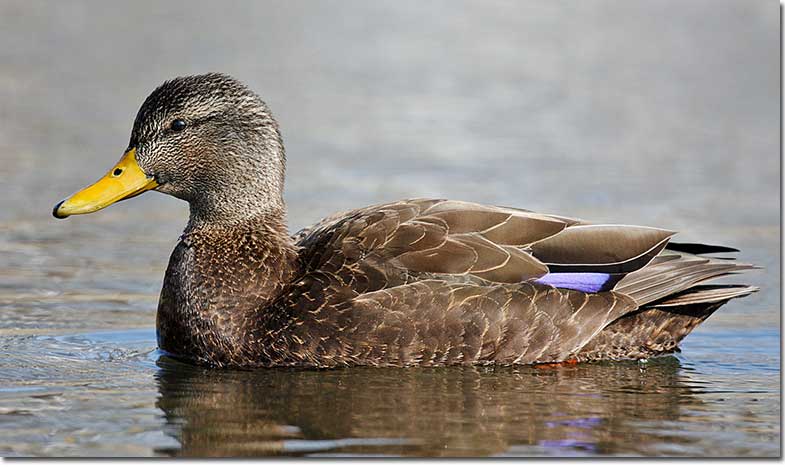
American Black Duck from side
- Range: Eastern North America. Breeds mostly in Canada and winters in the US. Resident in the northeastern US.
- Size: 21-23 inches
Male and female American Black Ducks are very similar, only females are slightly paler and duller on average. They have dark brown bodies with scaly-looking feathers, grayish-brown heads that are paler than the body, dark caps, and dark stripes through the eyes. The speculum patch on their wings is purplish rather than blue. Their bills are yellow for males and dull olive for females.
To distinguish American Black Ducks from other duck species, consider the following characteristics. Firstly, this species can be found in the eastern United States. When it comes to their appearance, they bear similarities to female Mallards and Mottled Ducks. However, one notable distinction is that American Black Ducks have darker bodies compared to both Mallards and Mottled Ducks.
Another key feature is their speculum on the wings. American Black Ducks showcase purple speculums with no border, while Mallards exhibit blue speculums bordered with white. In contrast, Mottled Ducks display dark blue speculums without any borders.

Krista King
Tuesday 18th of April 2023
I saw a bird that was black in color with a red bill, it looks like it had two sets of wings. Can you tell wh kind of bird this might be? I live in New Port Richey Florida, it was hanging out with some ducks.
SirBird
Sunday 3rd of March 2024
@Krista King, Common Gallinule?